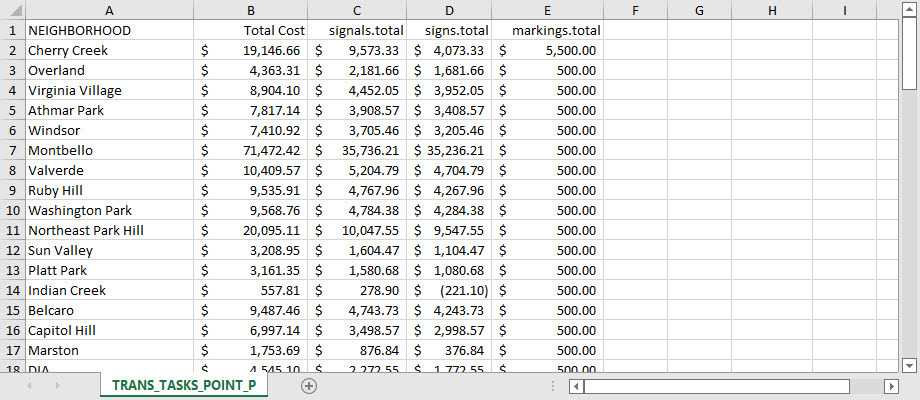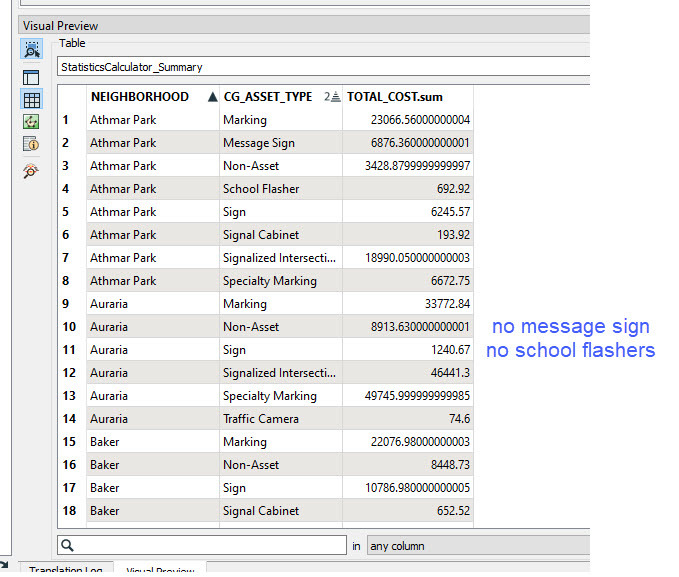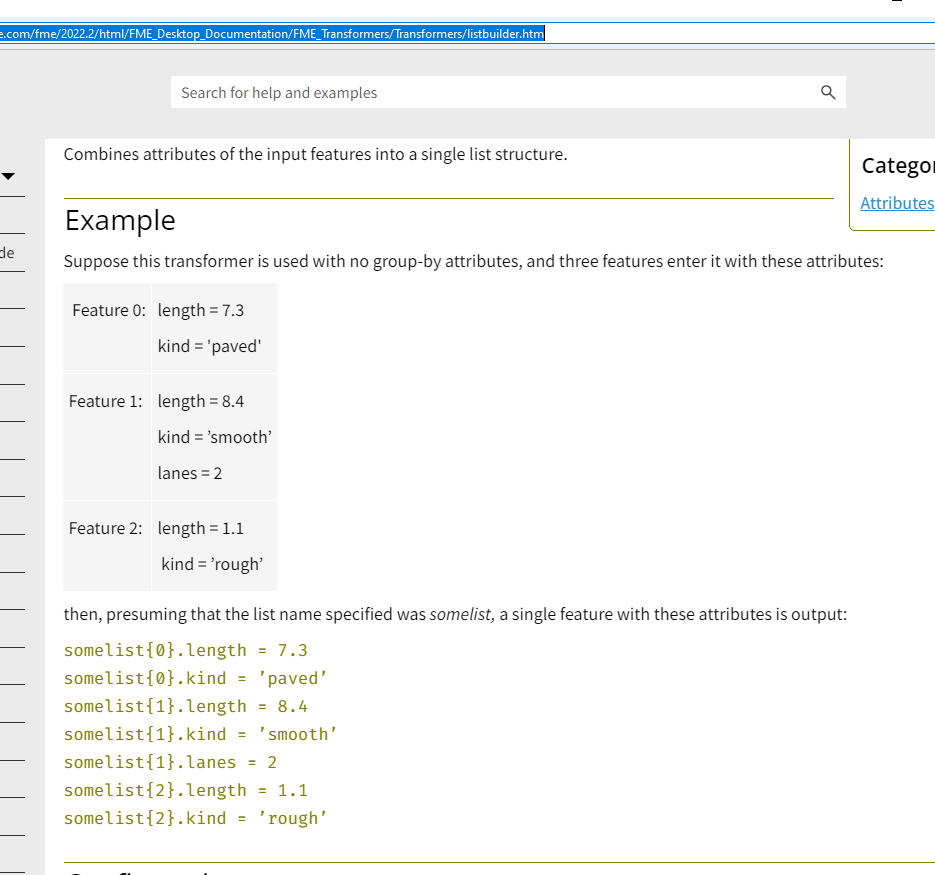An example would be a spreadsheet with 2 columns such as
Neighborhood activity
A Repair
B Install
A Repair
B Remove
Ideally, I could get output grouped by Neighborhood (A and B) and show the Activity values as column headers such as
Neighborhood Activity.Total.Count Repair.count Install.count Remove.count
A 2 (activities total) 2 (repairs) 0 (installs) 0 (removes)
B 2(activities total) 0 (repairs) 1 (installs) 1 (removes)
Should I expect to be able to do this with FME Statistics Calculator? If I need to use a parameter, I don't know how..
Any guidance would help.
thanks
Jim









 This is almost exactly shown in the FME Help example ..
This is almost exactly shown in the FME Help example .. 